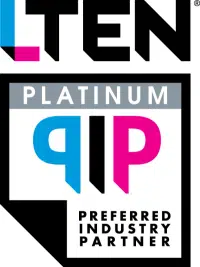My daughter has been coming home from school each day full of questions that I’m unprepared to answer: “How many people live in Alaska?” “What’s the longest book ever written?” “Who was the Greek god of medicine?” After admitting my ignorance, I tend to pull out my phone and suggest that we search online together for the answer. This method of learning new information or skills is becoming increasingly common. While there’s still a place for more formal, in-depth training on certain topics, we’ve seen an increased demand for training that:
- Can be accessed when and where learners need it
- Is personalized to meet learners’ needs and preferences
- Is interactive and immersive
Many of the current trends in instructional design help address the needs of today’s learners.
TREND #1: Mobile Learning
There is an increased focus on mobile learning (sometimes referred to as m-learning), in which training is delivered on a mobile device such as a tablet or smartphone. Today’s learners are on the go and want the flexibility of acquiring new skills and knowledge at any time, and from any location. Mobile learning allows sales representatives to fit training into their busy schedules and access training materials from their mobile devices when they’re on the road.
TREND #2: Microlearning
Corporate training is increasingly going “micro.” Instructional designers have long strived to segment or chunk content into smaller units to help manage cognitive load for the learner. Many clients are looking beyond chunked content to microlearning, or the delivery of bite-sized units of standalone content on a single topic. These microlessons typically require only a few minutes to consume and focus on a single purpose or concept. While microlearning is not ideal for complex topics that need to be covered in-depth, it can be a great option for delivering just-in-time learning such as a job aid. For instance, a sales representative could review a fact card to brush up on key product information before calling on a customer.
TREND #3: Personalized Learning
Every learner is unique in terms of their experiences, the knowledge and skills that they bring to training, and their preferences for how the content is delivered. Another key trend in instructional design is a focus on personalized learning rather than a one-size-fits-all solution. Personalized learning is learning that is customized and targeted to the learner. A similar, but a distinct trend is adaptive learning, in which content dynamically adapts to meet individual learner’s changing needs. There are many ways to make training more personalized to learners, ranging from the simple process of incorporating names into training materials, to the more complex task of developing customized materials that meet the needs and abilities of different learners. Pharmaceutical companies often want diverse groups of their employees to be trained on new products. Since each group has different levels of background and will apply their newfound knowledge and skills in unique ways, it can be helpful to customize the training materials accordingly. For instance, a product module developed for use by MSLs could be simplified and updated with new examples for use by commercial sales or marketing teams. Before designing a training curriculum, it is helpful to gauge the existing knowledge base of learners by administering a Pre-test assessment or conducting a more complete needs assessment.
TREND #4: Gamification
Many of the hottest trends in instructional design are based in the world of gaming and other interactive technologies. With game-based learning, the learning occurs within the context of a full-fledged game. Game-based learning is a great way to have people see the consequences of different types of decisions and/or actions in a safe environment. One of the downsides to game-based learning is that a well-designed game can be very expensive and time-consuming to develop. Gamification, which refers to the incorporation of game-based elements into training, is an increasingly popular option. Some ways that gamification is being incorporated into pharmaceutical training include:
- Providing instant feedback to show the impact of learners’ actions or decisions
- Offering rewards, such as points, for successful completion of tasks (leaderboards may be incorporated to track individual or team performance)
- Allowing the learner to see their learning progression (eg, advancing to a new level as a lesson is completed, receiving a badge for mastery of a specific skill)
- Encouraging friendly competition through individual or team-based challenges (eg, quiz-show style games can be used to test learners’ ability to quickly retrieve important product knowledge and scavenger hunts can ensure that key information from a PI or sales aid can be efficiently located)
Incorporating game-based elements such as these into pharmaceutical training can be a great way to engage learners while reinforcing and assessing knowledge.
TREND #5: Interactive Videos
Another way to make online training more interactive and immersive is through interactive videos. Watching a video is an inherently passive experience, but interactive videos allow the learner to engage directly with the content. One simple example of this is segmenting a longer video by topic and allowing the learner to select which topic they’d like to view from an online menu. Embedding reflection questions or quizzes at different points in videos help keep the learner engaged and offers a way to assess their knowledge. Videos can also incorporate branching scenarios in which the content is impacted by learner decisions or actions.
As these 5 trends demonstrate, any development of new training should begin with an intense focus on the learner. What skills and knowledge do they need to be successful in their careers, and which do they already possess? How and when are they most likely to access training materials? And finally, what engages and inspires them to learn?





